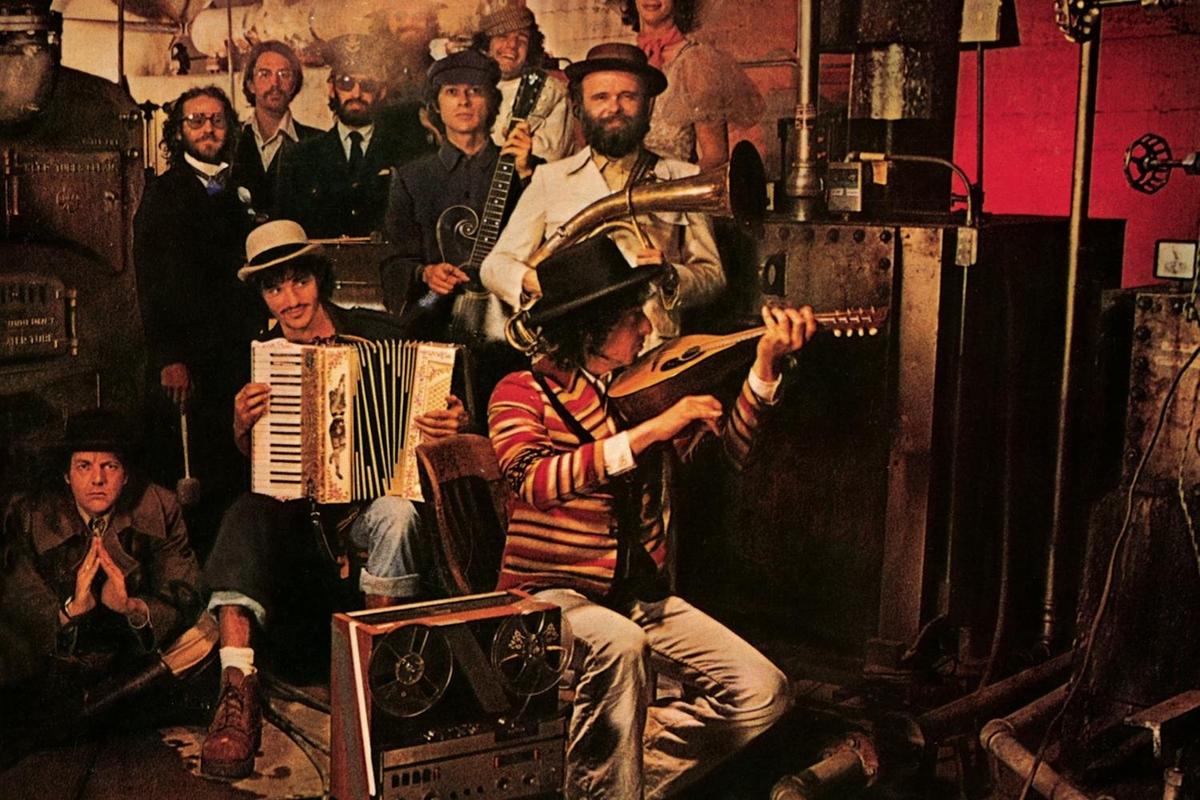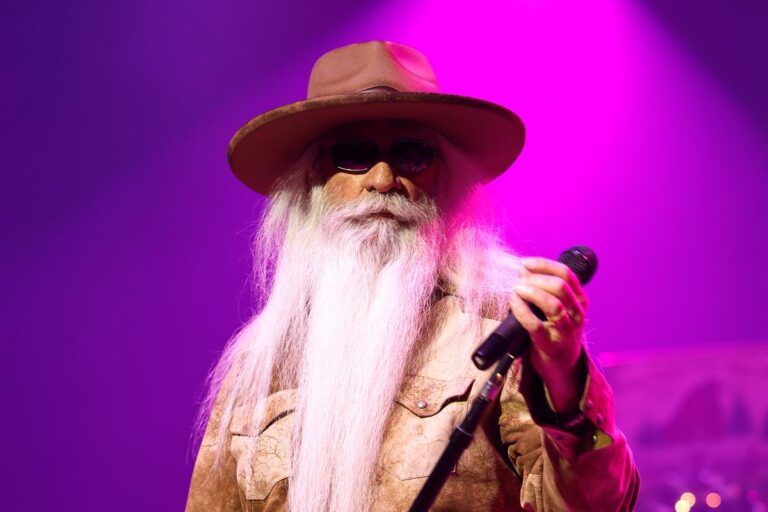Released on June 26, 1975, The Basement Tapes was genius finding itself – in Bob Dylan, once more; in the Band, for the very first time. Flawed though the LP may be, this double album of primarily late-’60s recordings followed along as Dylan and the Band poured the foundation for everything they’d do over the next few years.
Otherwise, it’s complicated. The shined-up long-bootlegged tapes provided a new vista, but they were also a showcase for some guys just screwing around. The Basement Tapes were about digging deep, and having a laugh. It was stuff that would last forever, and things done simply on a lark. And some of it wasn’t from that legendary basement at all.
The Dylan-sung songs offered new perspective during a moment of quietude: When they started taping in 1967, he wasn’t performing live anywhere. In fact, Dylan would only play four concerts over the next four years. He blamed a motorcycle accident, but maybe he was just tired. He and other members of the Band arrived after a fierce period of experimentation, one that Dylan’s fanbase in some cases wasn’t ready to accept. Everything came crashing down in the same way Dylan’s bike did.
READ MORE: Top 10 Songs by the Band
He used the accident as an opportunity for reflection and most everything that came before seems impossibly far away during these loose sessions held in rural West Saugerties, New York, where Dylan, Robbie Robertson, Richard Manuel, Garth Hudson, Rick Danko and (finally) Levon Helm rummaged around for what might come next.
None of it was planned, as they gathered in this most rudimentary of places – the basement of an old farmhouse, dubbed Big Pink because of its outlandish paint job – and could just as easily have gone unremembered. Thankfully, Hudson had a quarter-track Ampex recorder.
At times, The Basement Tapes – and particularly 2014’s expanded Basement Tapes Complete: The Bootleg Series, Vol. 11 – felt like a woodshedding for both Dylan and the Band. The best material emerged amid scores of snippets, with half-finished thoughts, throw-away originals and weird cover songs that didn’t make the cut on the Robertson-curated initial edition of The Basement Tapes. No rules were applied, no dogma.
“There would be an informal discussion, before each recording,” Hudson later told me. “There would be ideas floating around, and the telling of stories, and then we’d go back to the songs. It was very down to business for everybody. There wasn’t much of a desire to jam out, like playing a 12-bar blues. We never slowed down.”
They were finding their way to something new. Dylan tracks from this period were later covered by the Byrds, Peter Paul and Mary, and Manfred Mann, while three of the songs they worked on at the farmhouse (“Tears of Rage,” “I Shall Be Released” and “This Wheel’s on Fire”) were reconfigured for the Band’s triumphant debut.
Listen to Bob Dylan and the Band’s ‘Million Dollar Bash’
Widely Bootlegged, But Not Officially Released
“We had toured since 1960, almost nonstop,” Danko told me. “When we met Bob Dylan, all of the sudden, time was on our side. We had some time to do the things that make a career.” In the end, however, The Basement Tapes LP is about more than the sum of its successes. It’s also about rewriting history.
This was the birth of Dylan’s next countrified persona, even as the Band established an entire aesthetic world of its own. It was all there, even if fans didn’t get the full picture for decades. “I mean, I thought that I was just gonna get up and go back to doing what I was doing before,” Dylan admitted to Rolling Stone, “but I couldn’t do it anymore.”
Over the wider course of things, there were dark, spiritual ruminations (“Tears of Rage” and “I Shall Be Released”), but also an abiding sense of history (John Lee Hooker’s “Tupelo” and Curtis Mayfield’s “People Get Ready” were memorably covered), of ageless connection (“Ain’t No More Cane,” “She’ll Be Coming ‘Round the Mountain” and “See That My Grave Is Kept Clean,” among others) and of loose, familial fun (“Apple Suckling Tree” and “Don’t Ya Tell Henry”).
“We made a more concerted effort at writing songs, and the study of literature,” Hudson said. “We looked for words, phrases and situations that were worth writing about. I think that Bob Dylan showed us discipline, and ageless concern about the quality of his art.”
Gone are the benzedrine beats of Dylan’s earlier work with the former Hawks, who themselves have also become reborn in both name and in spirit. The tough R&B influences that had ruled the imaginations of the Band long before Dylan came along, when they were backing a transplanted rockabilly hound named Ronnie Hawkins, fell away.
Something more stripped down emerged in its place. The songs were quieter, more direct and ultimately archetypical of what happened next in both of their careers. Dylan returned with the homespun joys of John Wesley Harding while the Band set off an Americana big bang with 1968’s Music from Big Pink. Bootlegs of these earlier recordings proliferated but the music remained officially unreleased.
Listen to Bob Dylan and the Band’s ‘This Wheel’s on Fire’
The ‘Basement Tapes’ That Weren’t From the Basement
By the time The Basement Tapes were finally issued, however, Helm was the principal vocalist on “Ain’t No More Cane” – not Dylan. In all, eight of the album’s 24 original tracks found members of the Band at the mic. Clearly aimed at rebalancing the era, Robertson’s completed track listing mischaracterized a career-turning moment in both of their timelines.
It’s not that Band-led tracks were inferior. They were demos completed without Dylan or songs specifically updated and recorded before the LP’s release. A subsequent reissue of Music From Big Pink attempted to right things, adding nine bonus tracks that included the same recording of the Manuel-sung “Katie’s Been Gone.” Basement Tapes Complete: The Bootleg Series, Vol. 11 only featured the original Dylan vocals.
Helm wasn’t even around for the core initial sessions at Big Pink, only returning after Dylan had left to begin his next project. Dylan seemed to view it all more as creative therapy than any true effort to make an album. Thankfully, the studious Hudson served as both engineer and historian.
“We were all up there sorta drying out, making music and watching time go by,” Dylan says in Clinton Heylin’s Bob Dylan: Behind the Shades Revisited. “So, in the meantime, we made this record. Actually, it wasn’t a record. It was just songs which we’d come to this basement and recorded, out in the woods.”
Hudson’s careful recordings and detailed filing system represented yeoman’s work, considering the haphazard fashion in which everything unfolded. The expanded version made clear the depth of what he’d captured. But in the end, they didn’t find a lot of material that was more individually revelatory than what had already been officially released in the ’70s.
Instead, Basement Tapes Complete: The Bootleg Series, Vol. 11 was more about reorienting perspectives after the original album’s blatant myth-making: The Band was simply backing Bob Dylan, though they both ended up creating a different musical language for themselves.
Bob Dylan ‘Bootleg Series’ Albums Ranked
His many studio and live albums tell only part of his story.
Gallery Credit: Michael Gallucci
See Levon Helm in 25 Interesting Rock Movie Facts



